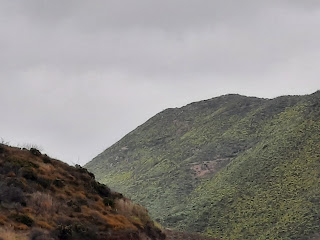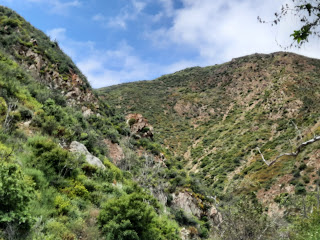Week 8, 7/11-7/14
This was the start of my week with PSRM, which stands for
planning, science and resource management. On my first day I spent about an
hour or so with different sections of the division. I started my morning with Cathy,
and we went to examine the many raptor perches in the park. We cleaned off the
wildlife cameras and switched out the memory cards so we could see what types
of birds had been using the perch.
Next, I went to see the GIS specialist, Denise. She showed
me how she inputs location data to create accurate maps of the park. She can
design maps for the visitors to use that highlight the trails, and she creates
maps for the terrain itself. These maps usually have the elevation levels
labeled as well as geological landmarks. Maps like this assist researchers when
they conduct surveys, and the researchers can even help Denise make her maps
more accurate.
After that I went to the supervisor of cultural resources, Gabrielle.
She explained to me how they conduct surveys of an area and the criteria for a
place or building to be considered historic. Gabrielle also showed me some
artifacts that the crews have recently collected, there were a few pieces of obsidian,
and some worn down tools. She taught me more about the history of the Chumash
and how they were affected by the Spanish missions.
I ended the day with John, the chief of the PSRM division.
He pulled out a map of the entire rec area and explained to me how his division
works the entire park and not just the areas managed by the NPS. He also walked
me around the parking lot of headquarters and named some of the trees and
bushes that were growing there.
Wednesday, I got to assist with weed monitoring. Jeanette,
another intern, and I drove out to many locations across the rec area and we
surveyed and documented the weeds in an area. When we get to a survey location,
we must walk five-hundred meters from the starting point and every fifty
meters, document the weeds in the vicinity. Then we pass these documentations
along and the team in charge of removing the weeds can figure out the best way
to do so without harming native plants.
caterpillar on a Milkweed plant
I also got to work in the plant nursery at Rancho Sierra Vista. Early in the morning, two representatives from philanthropic organizations came to see a presentation the nursery staff had prepared. If the representatives were impressed, they would advocate to their boards in favor of providing the program with funding. With more funding the plant program will be able to pay their interns more and afford more advanced equipment. After the representatives left, we got to work. I learned how to properly mix soil for planting. You need equal parts light soil, heavy soil, and prolite. Then you add some water and mix it together until it’s the right consistency. I also did some transferring, moving a plant to a bigger pot. I think I transferred around fifty plants.On Friday I joined Sienna and Lorelai, who are reptile and
small mammal interns, to do some pitfall trapping. We had eleven arrays to
cover, eight at Cheeseboro and three at Lang Ranch. The traps are these large
paint buckets planted in the ground and the lids are propped up with wooden
blocks. We had to observe the animals that had fallen in the traps and then
close them so no more animals would fall in. There were a lot of beetles, spiders,
and crickets in the traps, and we were instructed to just release them. We were
focusing on reptiles and small mammals. We found many toads and field mice, a
few skinks, and a snake. When we found those animals, we needed to weigh and
measure them. I was surprised how quickly we got through all eleven arrays, given
how many reptiles and field mice we found. I think this day was my favorite out
of the entire week, because I have a soft spot for animals and it was really
cool to be able to hold them.






Comments
Post a Comment